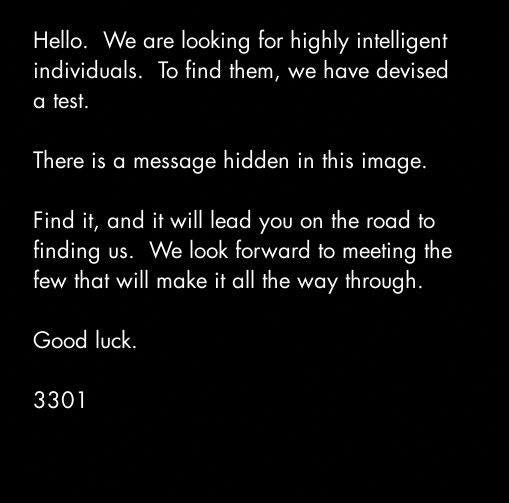
Every agency or corporate recruiter is using LinkedIn as a primary tool. It’s simple, fast, and you can reach candidates pretty easily. Other recruitment sources are job boards, Google, and so on. But not every great candidate is on LinkedIn, for various reasons, and not everyone can be found by Google X-ray because Google is not able to penetrate the whole internet and all forums. Since technical forums are quite often password-protected and therefore invisible to Google, Bing or Baidu, you can only locate those by using Booleans and advanced operators. But you cannot always access these websites, because they are hidden in the Deep or Dark Web.
Difference between Deep Web, Dark Web and Surface Web
Everything that search engines can’t access, but is still accessible by a normal browser if you have a URL, is part of the Deep Web.
Everything that is hidden for a purpose, and inaccessible through standard web browsers, is part of the Dark Web. That is a small portion of the Deep Web.
You are visiting numerous websites every day. This part of the Internet is called the Surface Web, which you can visit through search engines. But this is only a small part of the Internet, only around 4%. But what about the remaining 96%?
The vast majority of the Internet lies in the Deep Web. Some statistics mention that the Deep Web is estimated to be 500 times the size of the Surface Web, and I believe the size of the web is definitely even bigger than that.
But no one knows how big the Deep Web really is. Some data is hidden for a purpose (password protected websites/forums), and some of these sites cannot be crawled by current search engine technologies. Data that you can find in the Deep Web is hard for search engines to see, but unseen doesn’t equal unimportant. You can find such interesting data in the Deep Web like company databases, address books, etc. The potential for this data is unlimited.
Deep Web pages are operated just like any other site online, but they are invisible to web crawlers. Search engines (Google, Yahoo, Baidu, Yandex etc.) rely on programs known as crawlers or spiders that gather information by following the trails of hyperlinks that tie the Web together.
Every day, the Deep Web is getting deeper and bigger. Google, Baidu, Bing and the other search engines are going to improve theirs algorithms so they can crawl more data. As the internet grows more and more, it will face the big data problem: how to index, search and analyze all this data.
If you want to find this hidden information or access these hidden web sites, you need special software, such as The Onion Router (commonly known as Tor). To access data on the Deep Web, you use special browser software that helps you reach this hidden part of the internet. Tor is able to help you maintain anonymity online and provides access to so-called hidden services with the .onion pseudo-top-level domain host suffix.
Of course there is a darker side of the Deep Web (fake IDs, stolen passwords…), but it’s also full of a surprising amount of knowledge and interesting data that you can use for your candidate search.
The purpose of this article is not give you a manual on how to source candidates on the Deep Web, but to introduce this part of the Internet to you. The “How to search for candidates on the Deep Web” manual will be a little bit longer than this article.
Deep Web and Dark Web
Deep Web
The Deep Web is sometimes called the Hidden Web or Invisible Web. It is full of pages that cannot be found by crawling. The Deep Web is a part of the internet that is not accessible by these crawlers and search spiders, so you cannot find it over Google, Yahoo, and other search engines. Forums where you can find and contact interesting candidates are quite often password-protected and therefore invisible to Google, Bing or Baidu, but you can locate these forums using Booleans and advanced operators.
One of the Deep Web search engines is Clusty — a meta search engine that combines the results of several top search engines.
Dark Web
This area of the Deep Web is a portion of this part of internet inaccessible through standard web browsers. You will need to use Tor to access the Dark Web.
What is TOR?
TOR (The Onion Router) is a program that makes you anonymous on the Internet. This means that you will be invisible for your internet provider, hackers, ad agencies, and spies, and nobody can tell what you are doing on the Internet without going through a lot of effort.
Note: Accessing the Tor network is legal, although this may not apply to the activities you participate in there or things you can find there.
On Tor you can find password-protected forums, and some of these forums also have a section called “Looking for a job” or “Hire me.”
One of the Dark Web search engines is Ahmia , a search engine for hidden onion sites running inside the Tor network.
Have you ever thought about sourcing candidates on the “Deep/Dark Web”?
Using Tor could unlock the door to a whole “Dark Web World,” and you will see things that you did not think existed online. Reaching candidates in this part of the internet could be your successful sourcing strategy.
Cicada 3301
Cicada 3301 is a name given to an anonymous organization that posted the probably hardest puzzle on the internet. It is basically a recruitment tool and one of the most interesting recruitment campaigns, which consists of a set of complex puzzles with the goal to recruit capable cryptanalysts from the public.
The stated intent was to recruit intelligent individuals by presenting a series of puzzles which were to be solved, each in order to find the next, and taking them into the Deep Web. The Cicada 3301 clues included different communication mediums like the Internet, telephone, music, digital images, pages of books, etc.
No one knows who sets the puzzles, or what the prize is at the end, but some believe it is a recruitment process for the NSA, CIA, MI6, FSB, some mercenary group, or a group of hackers like Anonymous.

The campaign starts with one picture after a designated number of solvers visited particular websites on Tor, and the end of the campaign is when they shut down the website and left only the message that they found the person for them. But the outcome of Cicada 3301 recruiting (and who is behind this) is still a conundrum.
This recruitment campaign from Cicada 3301 was a good inspiration for other cryptographic challenges like Project Architeuthis, developed by The United States Navy. This is based on the Cicada challenge and it’s also used as a recruitment tool for finding the right people with the right skills.
Other agencies like GCHQ also released their ‘Can You Find It?’ competition. This quest is designed to test both experienced and self-taught geeks to crack a series of cryptic codes and the person who can solve this cryptic challenge could be on their way to getting a job as a spy.
The Deep Web and the Dark Web is a great source to find great talents, and it’s a place that only few recruiters operate in. You can search for people in the same space (Surface Web — 4% of the internet) as everybody else, or try to dig deep and use the other 96% of the Internet which only a few others recruiters are using, because the Deep Web is offering a great opportunity.
In this Information Age, the most coveted commodity is information, so the value of the Deep Web is immeasurable, and recruiters and information seekers can no longer avoid its importance.
Have you ever tried to search for candidates there?
Originally published at LinkedIn
